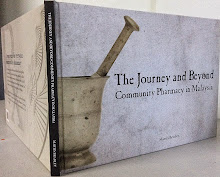
The languorous morning was bright and clear. A constant sun warmed through an idyllic blue sky as I journeyed towards Lumut, in Perak; detouring through Pusing to the patently somnolent town of Papan.
I had been invited to view the display honouring Papan’s most famous daughter Sybil Kathigasu, nurse and resistance warrior against the Second World War Japanese invasion. Its founder, Law Siak Hong, has created a space within Sybil’s old surgery for historical narratives to grow, and memories to linger.
Arriving early, I took a slow drive through the town to witness, for myself, its balmy, soothing atmosphere.
Papan, once a home for Mandailing peoples, was named for the river (Sungei Papan) and from the area’s lumber produce. Gradually it grew into existence during the early 1800s, but was ravaged by fire a century later. Papan, one of the many Kinta Valley tin mining towns, began a slow decline from that fire and a decrease in tin production until today, where it exists as a shell of its former self.
Today the town of Papan lies dormant, awaiting that spark which will cause it to erupt and return to its former splendour. Yet in its dormancy Papan exudes peace, serenity, calm and is, in a way, stately too. The town’s obvious serenity and calmness is reflected throughout Hong’s spatial creation to honour Sybil.
Within the calming blue-washed walls, Hong’s collection is not just a by-product of nostalgic romance but a full-on love affair with artistic spatial creation and its nuances, creating a lulling tranquillity out of an organic collection.
 Inside the presenting display room, curiously blue/green metal electric fans nestle with cabinets containing sparkling glassware. Japanese Malayan currency is firmly held by an Art Deco ink stand abutting an enamelled bowl.
Inside the presenting display room, curiously blue/green metal electric fans nestle with cabinets containing sparkling glassware. Japanese Malayan currency is firmly held by an Art Deco ink stand abutting an enamelled bowl. Towards the rear of the display, just before the visitor is enticed into the lush garden, an ancient bicycle rests on its stand, awaiting the rider who is, momentarily, indisposed.
Hong’s poignant creation of display space concurrences and alliances refutes traditional pigeon –holed museology, where items are catalogued until their demise, then tagged and bagged and buried.
Instead, Hong’s correlation of objects better resembles contemporary art installations, where visitors are subsumed into the experience - as much part of the overall work, as are the items themselves.
For this innovative collection draws upon a spontaneous creation of narratives, and storied sub-texts, facilitated through visitor interaction using individual perspectives and inspiring object juxtaposition.
Being neither a re-creation of the war-time clinic, nor a static museum of staid objects Hong, instead, has created an organic approach to his display, presenting none of the usual gallery clues as to nomenclature or single dominant, imposing, narrative. Within the space’s ambience, it is for the visitor to interact with the items and together create narratives.
 Eventually, Hong’s antique cornucopia spills over into a sublimely tranquil oasis of green whose siren call could be mistaken for that of visiting birds. Where the internal display remains ultimately bounded by the form of the structural walls, outside there are no such boundaries and the visitor’s glance is able to trace the line of objects, through foliage and away to gaze at beckoning hills.
Eventually, Hong’s antique cornucopia spills over into a sublimely tranquil oasis of green whose siren call could be mistaken for that of visiting birds. Where the internal display remains ultimately bounded by the form of the structural walls, outside there are no such boundaries and the visitor’s glance is able to trace the line of objects, through foliage and away to gaze at beckoning hills.It was with more than a little sadness, that I had to eventually draw myself away from the garden, the building and the town.
 With very little encouragement I could have lain behind one of the outside bedroom walls, peering though aged wooden shutters at one of the most restful places I have visited – a dreaming lotus eater.
With very little encouragement I could have lain behind one of the outside bedroom walls, peering though aged wooden shutters at one of the most restful places I have visited – a dreaming lotus eater.Sybil Kathigasu’s Clinic, the memorial display, gardens and restfulness maybe accessed through Law Siak Hong, at siakhongstudio@yahoo.com.









No comments:
Post a Comment